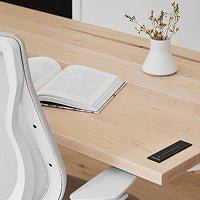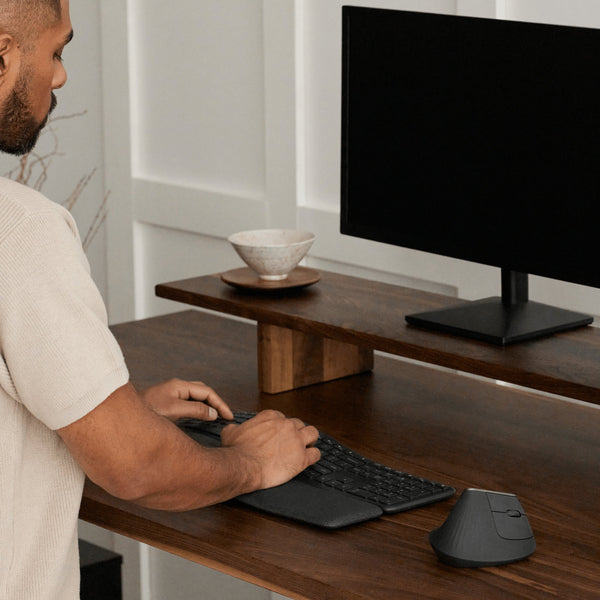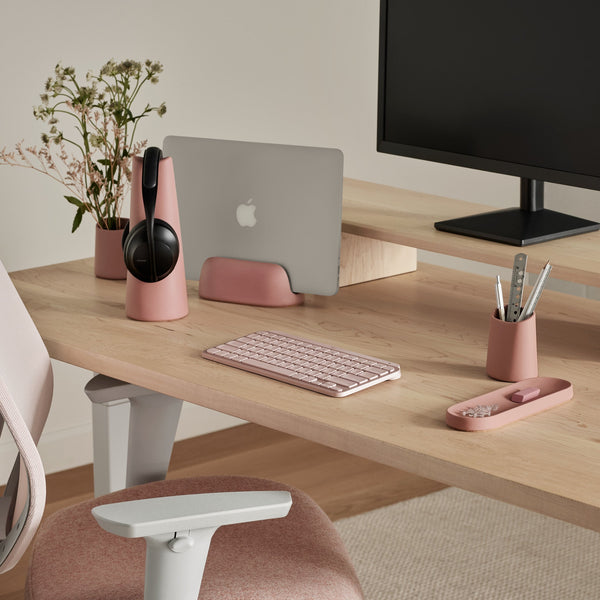Lower back pain is so prevalent in today’s society that it’s now the number 2 reason Americans consult their family doctors, right after the common cold. Luckily, it’s not contagious! But as with any bodily pain, it should be taken seriously to prevent it from worsening or becoming chronic.
For most, irritating back pain will often occur in an office setting. This is primarily due to the significant strain placed on our musculoskeletal system by most office designs and desk setups, which are not conducive to extended working hours. The most effective approach to preventing occupational back pain is by proactively addressing the strain on your body. This involves maintaining correct posture, designing an ergonomic desk setup, and, most importantly, reducing the amount of time spent sitting.
Tips to Correct Your Posture and Limit Back Pain While Your Work
Avoid setting yourself up for poor posture and follow these guidelines:
-
Before you sit down, make sure to remove your cell phone and wallet from your pockets.
-
When seated, square your pelvis to evenly distribute your body weight at your hips, and resist the temptation to cross your legs.
-
Place your feet firmly on the ground, with your knees pointing forward and your thighs angled slightly downward.
-
Adjust your chair height so that your forearms are parallel to the desk surface.
-
Keep your elbows bent at a 90-degree angle and position your keyboard and mouse within easy reach.
-
Raise your monitor to eye level to avoid bending your neck forward or backward.
-
Maintain a slightly reclined position (around 10 degrees) to create a natural arch for your lower back.
Remember, you're not a mannequin, so don't be surprised if you find yourself unintentionally slipping out of this ideal posture. Practice will help you achieve perfection!
Improve Your Desk Ergonomics to Prevent Back Pain
-
Consider using a footrest to alleviate pressure on the lower back by elevating your feet. Shorter people will find this prop exceptionally handy.
-
Prevent the onset of back pain associated with extended working hours at a desk by investing in standing desk. This allows you to alternate between sitting and standing positions, reducing the strain on your sitting bones and spinal discs. Notable options include the Sway Standing Desk and the Shift Standing Desk.
-
Use an anti-fatigue mat to improve circulation and alleviate fatigue in both your legs and back muscles.
-
Ensure your screen is at or slightly below eye level to avoid slouching and neck strain. We recommend using a desk shelf or a monitor arm to ensure optimal monitor placement.
-
Invest in an ergonomic chair with lumbar support, or use a pillow to provide cushioning for your lower back. Even a rolled up towel is better than no support at all! To ensure proper lumbar support, we recommend dedicating a few moments to read our blog post.
-
Embrace the convenience of Bluetooth technology by using a headset for hands-free phone calls. This allows you to take calls while standing or walking, promoting a more active work routine.
How to Increase Your Activity Level at Work
-
If you have a standing desk, switch between seated and standing positions while you work.
-
Schedule a reminder on your phone to prompt you to stand up, stretch or take a walk in between tasks. You can also try these 7 exercises to include more movement during your work day.
-
Consider wearing a pedometer or using a fitness tracking app that can help you move more throughout the day. Set a goal for yourself to take a certain number of steps each day and use these tools to track your progress.
You rely on good teeth to munch apples and strong knees for running, but a healthy back is crucial for almost everything else - it's time you had your back’s back! It may seem like a lot of adjustments, but you’ll notice a difference and the benefits of these tips surprisingly early. So give these tips for preventing occupational back pain a try and let us know how fast you notice a difference. Before you know it, you’ll wonder how you ever spent so much time twisted up in a sedentary and crooked posture during your work week!
Disclaimer: If you are already experiencing severe discomfort from the persistent back pain, it is advisable to consult with your physician for additional assistance.
Sources
- https://www.spine-health.com/wellness/ergonomics/office-chair-how-reduce-back-pain
- https://www.spine-health.com/blog/6-easy-tips-reduce-back-and-neck-pain-work
- http://waldegraveclinic.co.uk/back-pain-sitting-at-your-desk/
- http://www.wikihow.com/Sit-at-Work-If-You-Have-Back-Pain
- http://www.businessinsider.com/how-to-relieve-back-pain-sitting-stretch-2017-3
- http://www.mayoclinic.org/healthy-lifestyle/adult-health/in-depth/back-pain/art-20044526
- https://www.forbes.com/2008/09/10/back-pain-prevention-forbeslife-cx_avd_0910health.html
- https://www.spine-health.com/wellness/exercise/back-exercises-and-abdominal-exercise-recommendations
- https://draxe.com/the-top-5-exercises-to-strengthen-your-core-to-prevent-low-back-pain/






Leave a comment